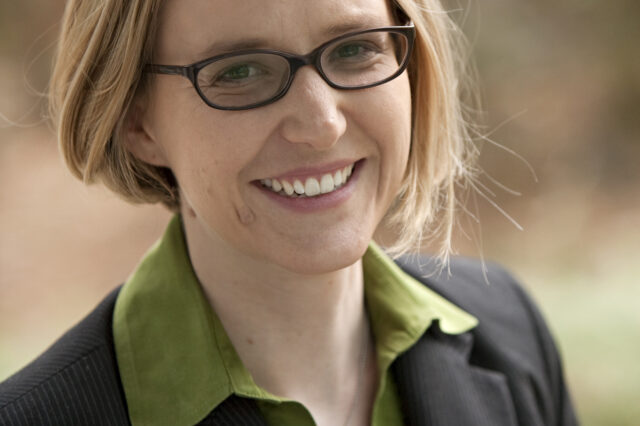UF targets known barriers to preventing cervical cancer

The human papillomavirus vaccine can protect against cervical cancer, yet only one-fifth of adolescent girls on Medicaid in Florida receive the vaccine, even though it’s free for them, University of Florida researchers say.
Now, with the help of a $150,000 grant from the Society of Adolescent Health and Medicine, UF researchers have launched a pilot project aimed at increasing vaccination rates in girls. Led by Stephanie Staras, Ph.D., the UF researchers will develop and test a multifaceted approach to increase awareness about the vaccine among girls and their parents, and to prompt more doctors to offer it.
“In Florida, girls enrolled in Medicaid are about half as likely as the general population to protect themselves from cervical cancer by getting the HPV vaccine,” said Staras, an assistant professor in the UF College of Medicine department of health outcomes and policy. “We aim to decrease the vaccine inequalities among adolescents enrolled in Florida Medicaid and KidCare by addressing what we found to be the biggest barriers — provider recommendations, cost and concerns about safety.”
The study is one of 10 public health demonstration projects the Society of Adolescent Health and Medicine is funding through a grant from Merck & Co. Inc., the makers of Gardasil, a vaccine for the human papillomavirus, or HPV, which is the main cause of cervical cancer.
The Centers for Disease Control and Prevention recommends that girls and boys receive an HPV vaccine at age 11 or 12. The two vaccines approved by the Food and Drug Administration for protection against cervical cancer are Gardasil and Cervarix, which is made by GlaxoSmithKline. Both vaccines are given as a series of three shots and protect against some of the most common types of HPV. The CDC also recommends that young women ages 13 to 26 get the vaccine if they did not receive it when they were younger.
UF researchers have teamed with five Gainesville health care providers to complete the 18-month study, which will focus on teens enrolled in Medicaid and Florida KidCare, the state children’s health insurance program. Both Medicaid and Florida KidCare provide the HPV vaccine at no cost to patients.
To increase the number of girls who start an HPV vaccine series, the UF team will test different ways of getting facts about the vaccine to adolescents and their parents. Postcards will be sent to parents in an effort to educate them about cost and safety. In addition, the researchers will raise awareness about HPV and the vaccine among adolescents through a system that invites teens to respond to health-related questions on a tablet computer while they’re waiting in their doctor’s office.
The same device then prompts their health care providers to discuss the HPV vaccine and other resources during their visit. These techniques will be tested against standard practice, which varies from doctor to doctor and often results in missed opportunities to offer the vaccine to patients, Staras said.
Typically, vaccines are offered to patients during routine child wellness visits. But as children age into adolescence, the frequency of such visits tends to decline, with patients becoming more likely to visit the doctor only when they are sick, Staras said. Using the tablet computer in these instances not only will help educate the patient but also should help remind physicians to offer it during visits when they are typically not focused on vaccines.
“We hope what we learn can be applied not only to helping more girls across the country protect themselves against cervical cancer, but also to providing new strategies for increasing vaccination rates among adolescents more broadly, which are persistently lower than vaccination rates among infants,” Staras said.
Because the approach being studied uses data available at a health system level and health information technology, findings could be readily applied by other Medicaid programs and health care systems.
The series of grants the society funded is part of a larger project to investigate unique barriers to vaccination in adolescents.
“Each of the proposals was outstanding in terms of its potential impact on public health, potential to affect vaccination rates, focus on improving health disparities, project design and innovation,” said Jessica Kahn, M.D., M.P.H., committee chair for the Society of Adolescent Health and Medicine and an associate professor of pediatrics in the division of adolescent medicine at the Cincinnati Children’s Hospital Medical Center. “In addition, the projects selected are diverse in terms of geographic location, approach, vaccines targeted and the population to be impacted.”